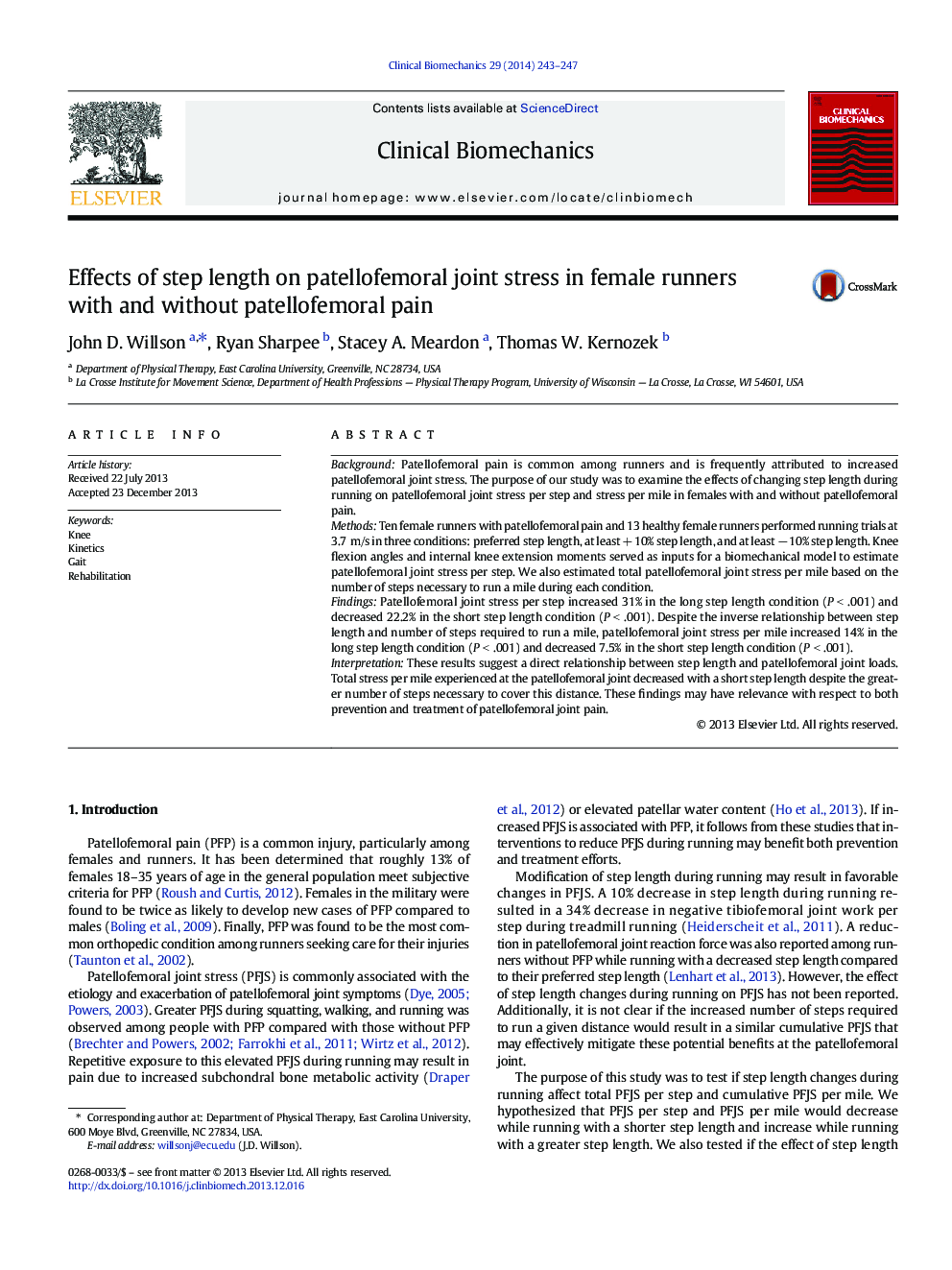| Article ID | Journal | Published Year | Pages | File Type |
|---|---|---|---|---|
| 4050275 | Clinical Biomechanics | 2014 | 5 Pages |
BackgroundPatellofemoral pain is common among runners and is frequently attributed to increased patellofemoral joint stress. The purpose of our study was to examine the effects of changing step length during running on patellofemoral joint stress per step and stress per mile in females with and without patellofemoral pain.MethodsTen female runners with patellofemoral pain and 13 healthy female runners performed running trials at 3.7 m/s in three conditions: preferred step length, at least + 10% step length, and at least − 10% step length. Knee flexion angles and internal knee extension moments served as inputs for a biomechanical model to estimate patellofemoral joint stress per step. We also estimated total patellofemoral joint stress per mile based on the number of steps necessary to run a mile during each condition.FindingsPatellofemoral joint stress per step increased 31% in the long step length condition (P < .001) and decreased 22.2% in the short step length condition (P < .001). Despite the inverse relationship between step length and number of steps required to run a mile, patellofemoral joint stress per mile increased 14% in the long step length condition (P < .001) and decreased 7.5% in the short step length condition (P < .001).InterpretationThese results suggest a direct relationship between step length and patellofemoral joint loads. Total stress per mile experienced at the patellofemoral joint decreased with a short step length despite the greater number of steps necessary to cover this distance. These findings may have relevance with respect to both prevention and treatment of patellofemoral joint pain.
